 Before I start this week, I want to send out a huge thank you to everyone who helped us celebrate our 10th birthday last weekend. Your support means the world to us (after all, you’re why we’re still here!).
Before I start this week, I want to send out a huge thank you to everyone who helped us celebrate our 10th birthday last weekend. Your support means the world to us (after all, you’re why we’re still here!).
But you’re not here to listen to me go on about how wonderful you all are (or are you??!). Onto this week’s topic…
Part 3 of my wine term glossary. This week I’m going to focus on a few bottling/packaging terms.
Here we go…
Closure
“Closure” is just a fancy term for anything you put on or in the top of a wine bottle to stop the wine from falling out. Not only does it keep the good stuff in the bottle where it belongs, but it also keeps the “bad” (when it comes to wine storage for long periods of time) out.
 Muselet
Muselet
Ever wondered what that wire cage thingy on a champagne or sparkling bottle (which has a cork) is called? Wonder no more. It’s called a muselet and is designed to prevent the cork from popping out of its own accord under the pressure of the carbonated contents. It derives its name from the French museler, which means to muzzle.
Capsule
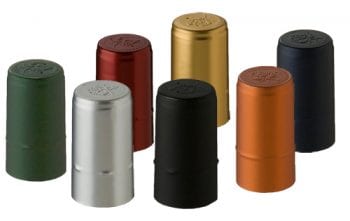 Wine capsules are the protective sleeves that go over the cork and down the neck of the bottle.
Wine capsules are the protective sleeves that go over the cork and down the neck of the bottle.
Their main purpose is to keep any unwanted pests (like rodents, insects, husbands…) from tampering with the cork while wine is stored for long periods. They also serve as a collar to catch drips when pouring. And some wineries use them to decorate the bottle with their logo or name.
Here’s an interesting fact…
Until the early 1990s, lead was often used to make capsules. However, it was phased out partly due to fears that trace amounts of lead residue could be transferred to the wine during pouring (no kidding!), but also because it was winding up in landfills. In 1996, lead was completely banned for capsule use. Now capsules are typically made of tin, heat-shrink plastic, PVC, aluminum or wax.
Crown Caps (also known as crown cork, crown seal or just cap)
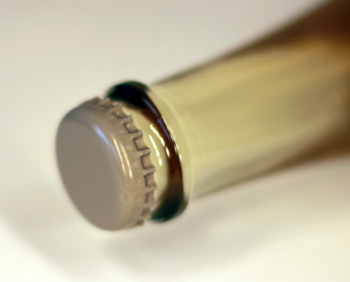 Crown caps are often used to seal Sparkling wine and Champagne bottles (and of course beer) instead of using cork. But as many of us know, crown caps are used behind the scenes during the production of sparkling wine made in the traditional method. The bottles are sealed with a crown cap during the secondary fermentation process which creates the bubbles.
Crown caps are often used to seal Sparkling wine and Champagne bottles (and of course beer) instead of using cork. But as many of us know, crown caps are used behind the scenes during the production of sparkling wine made in the traditional method. The bottles are sealed with a crown cap during the secondary fermentation process which creates the bubbles.
The main reason the caps are replaced with corks (as far as I can see) is to preserve the fanfare of opening a bottle of bubbly with that festive “pop”. But some producers, including Somerled, prefer to re-seal sparkling bottles with a crown cap. Rob prefers this as rarely has a person taken out an eye with a crown cap (the same can not be said for a cork, I am sure!). There is also more chance of your bubbly staying bubbly if you want to cellar it for a long time.
Punt
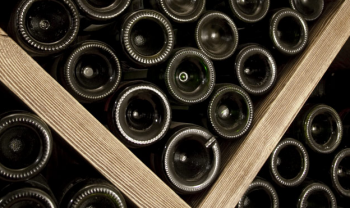 The punt of a wine bottle is that funny concave bump, dimple or steep rise portion at the bottom. Some people call it a hump. It is also known as a push-up or a kick-up. Some glassmakers also call this feature a “shove-up”, and when the base indentation is shallow, it is often described with terms like “indented” or “domed”.
The punt of a wine bottle is that funny concave bump, dimple or steep rise portion at the bottom. Some people call it a hump. It is also known as a push-up or a kick-up. Some glassmakers also call this feature a “shove-up”, and when the base indentation is shallow, it is often described with terms like “indented” or “domed”.
Sure. But why is it there and what does it do?
As far as I can tell, no one can really agree on that! The reasons I’ve seen cited include, for aesthetics, stability, content sedimentation, to enhance strength, marketability, practicality and sophistication!
I’m not going to delve into each of these, but my educated guess is that it’s a hangover from when wine bottles were free blown using a blowpipe and a pontil (an iron rod uses to hold a shape soft glass… funnily enough, also called a punty). This technique leaves a punt mark on the base of the bottle, by indenting the point where the pontil is attached. Happily, it also gives the bottle stability and strength.
Stelvin
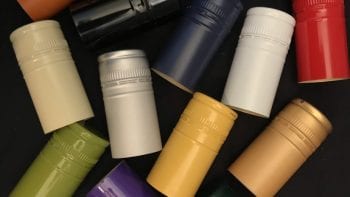 Just like Band-aid and Glad wrap, Stelvin is just a brand name for a screw cap.
Just like Band-aid and Glad wrap, Stelvin is just a brand name for a screw cap.
The caps have a long outside skirt, intended to resemble the traditional wine capsule, and use a neutral plastic liner on the inside wadding.
The Stelvin was developed in the late 1960s and early 1970s by a French company at the request of the then Production Director of Yalumba. From about 1973 Yalumba and a group of other wineries – Hardys, McWilliams, Penfolds, Seppelt, Brown Bros and Tahbilk – were involved in developing and proving up the concept and began using it commercially in 1976.
Shoulder
When I quickly googled “shoulder” to find out what it had to say, I stumbled across a whole world I never knew existed!
This definition made me think that there is probably a whole section of the population that lives and breaths bottles!
Their definition reads like this…
“The portion of the bottle which lies between the point of change in vertical tangency of the body and the base of the neck. Similar to the heel of a bottle, the shoulder is a transition zone between two other major portions of a bottle.”
I found it on this webpage.
Along with this diagram…
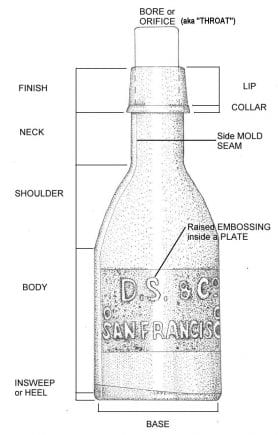
If you want to learn more about the wonderful world of bottles, knock yourself out!
And one last one for today. This one isn’t really to do with packaging, but it popped up during our 10th birthday zoom tasting with Rob on Sunday night…
Ullage
You might hear this term used in reference to winemaking, but it also may come up in a discussion about storing open bottles of wine.
Specifically, ullage is the amount by which a container falls short of being full.
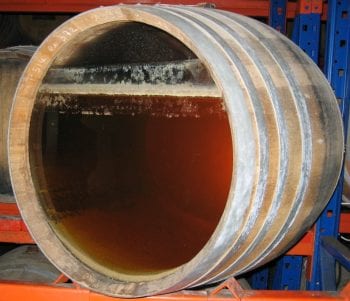 So, in winemaking, the word ullage is used to describe the amount of headspace between the level of wine in the barrel (or tank) and the top of the vessel. I’ve included the picture on the left to help you visualise it. However, you should note that the amount of ullage in a regular wine barrel (this one is being used to make a particular type of sherry which calls for a large amount of ullage) would never be this large. Wine barrels are filled almost to the very top with only a very small amount of ullage so the wine doesn’t oxidise.
So, in winemaking, the word ullage is used to describe the amount of headspace between the level of wine in the barrel (or tank) and the top of the vessel. I’ve included the picture on the left to help you visualise it. However, you should note that the amount of ullage in a regular wine barrel (this one is being used to make a particular type of sherry which calls for a large amount of ullage) would never be this large. Wine barrels are filled almost to the very top with only a very small amount of ullage so the wine doesn’t oxidise.
You may also hear ullage used to describe the amount of space in a wine bottle. For example, when you open a bottle of wine and drink a few glasses out of it, pop the cork/lid back on and keep it for a few days the amount of ullage will influence how long the wine can be kept for.
It’s not something we talk about much at Somerled… the contents of the bottles don’t stay there for long enough!
I’ve got a few more terms I’d like to chat with you about… at least enough for a Part 4 (maybe a Part 5??!). Do you have any you would like me to cover? Feel free to email me or leave a comment below.
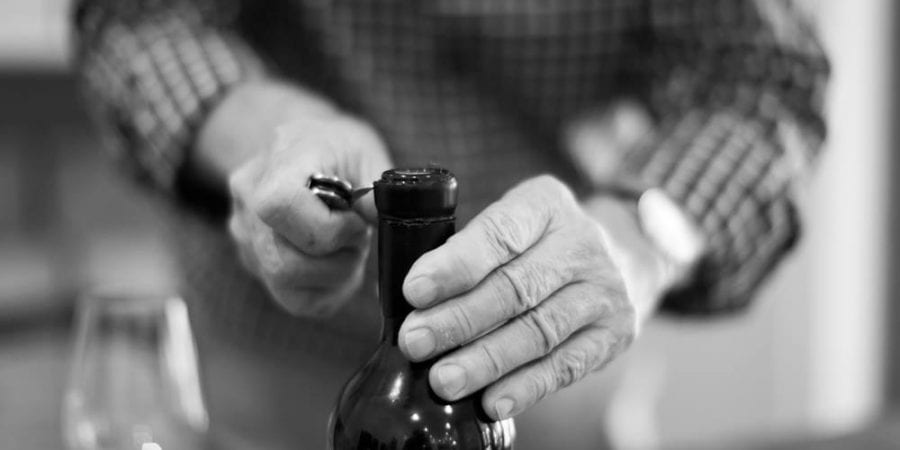
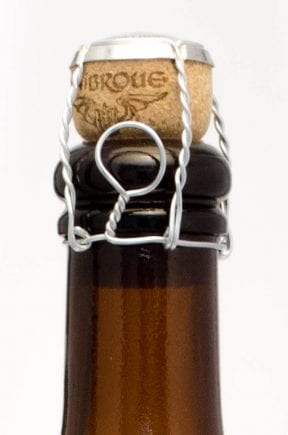 Muselet
Muselet
I knew all the others, but I now finally know what to call the wire thingy. Thanks!
You’re welcome Stan!